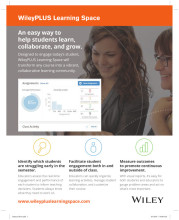Defining and redefining the problem
11 important questions on Defining and redefining the problem
Transform a broad problem into a feasible research topic by
2. Setting clear boundaries.
3. Select a perspective from which we investigate the subject.
Information gathered on relevant contextual factors will be useful because you will be able to do 2 things:
- Talking knowledgeably
- Raising the appropriate issues
Background information might include, among other things, the contextual factors:
2. Size in terms of employees, assets, or both.
3. Charter - purpose and ideology.
4. Location - Regional, national, or other.
5. Resources - Human and others.
6. Interdependent relationships with other institutions and the external environment.
7. Financial position during the previous five to ten years, and relevant financial data.
8. Information on structural factors.
9. Information on the management philosophy.
- Higher grades + faster learning
- Never study anything twice
- 100% sure, 100% understanding
Criteria of secondary data
2. Accuracy of the data - the accuracy of the data can be impacted by who collected it and how the data were collected. If specific information varies from source to source, you need to find out which information is accurate.
3. Relevance of the data - not all of the secondary data you find will be relevant to your particular needs.
4. Costs of the data - how much do the data cost?
Problem statement is feasible if?
Why should research be interesting for a researcher?
Exploratory research questions are developed when
2. Existing research results are unclear or suffer from serious limitations.
3. The topic is highly complex.
4. There is not enough theory available to guide the development of a theoretical framework.
There are three basis types of questions that research projects can adress:
- Exploratory
- Descriptieve
- Causal or explanatory
Content research proposal
2. Background of the study
3. Problem statement
a. Purpose of the study
b. Research questions
4. Scope of the study
5. Relevance of the study
6. Research design, offering details on:
a. Type of study - exploratory and descriptive
b. Data collection methods
c. Sampling design
d. Data analysis
7. Time frame of the study, including information on when the written report will be handed over to the sponsors.
8. The budget, detailing the costs with reference to specific items of expenditure.
9. Selected bibliography
Which 3 important steps are needed in the research process to narrow down a broad management problem into a feasible topic for research?
Step 2: Preliminary research
Step 3: Definition of the research problem
What's the difference between primary and secondary data?
Secondary: data gathered through existing sources. This is data that already exists and do not have to be collected by the researchers.
It's best to focus both kinds. Secondary data can help to focus further interviews more meaningfully on relevant aspects. And interviews may help to search for relevant information in secondary sources.
The question on the page originate from the summary of the following study material:
- A unique study and practice tool
- Never study anything twice again
- Get the grades you hope for
- 100% sure, 100% understanding
































